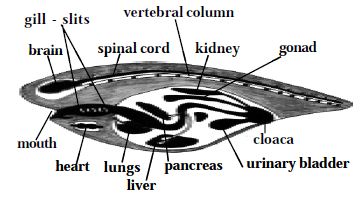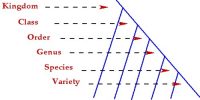Subphylum Vertebrata is characterized by the presence of brain case or cranium and a vertebral column which forms the chief skeletal axis of the body. The notochord is an embryonic structure. It is replaced in the adult stage by a cartilaginous or bony vertebral column. The body is covered with an integument having an outer epidermis and an inner dermis. The skin has many modifications such as glands, scales, feathers, claws horns and hairs.

Fig: A vertebrata-diagrammatic structure
The digestive system is ventral to the vertebral column. It is provided with a large liver and pancreas. The circulatory system consists of the ven-tral, chamberd heart. The circulatory system is of a closed type with arteries, veins and capillaries. The blood plasma contains red and white blood cor-puscles. Gill slits are limited in number (usually 5 pairs). There are two pairs of appendages. The anterior part of the nerve cord becomes differentiated into brain and spinal cord. The special organs of sense like the nose, eyes and ears are closely connected with the brain. Urinary and genital systems are closely connected to form an urinogenital system.












